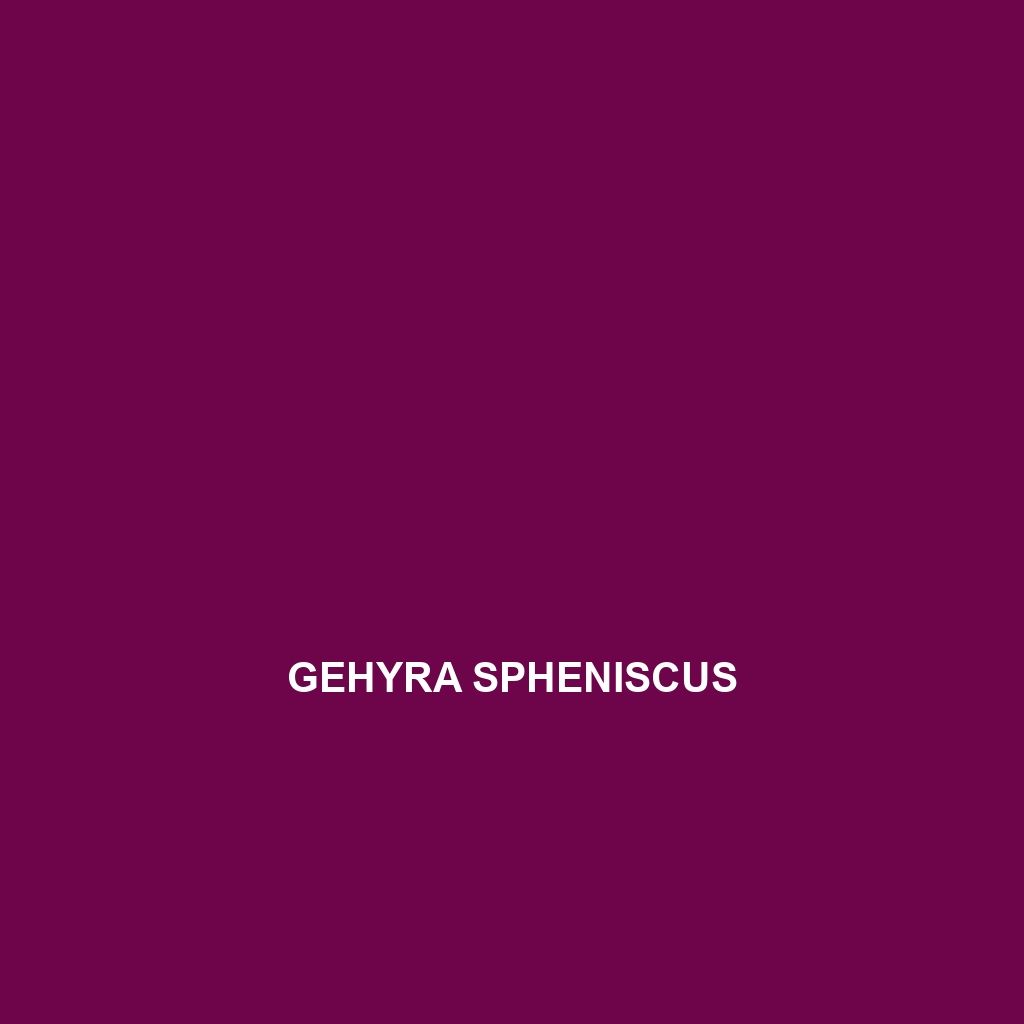Common Name
Gehyra serraticauda
Scientific Name
Gehyra serraticauda
Habitat
Gehyra serraticauda, commonly known as the serrated-tailed gecko, primarily inhabits arid and semi-arid regions, particularly the coastal areas of northern Australia and parts of New Guinea. These geckos are predominantly found in a variety of habitats, including rainforests and savannas, which provide essential cover and food resources. They thrive in environments characterized by rocky outcrops, low shrublands, and scattered trees where they can find crevices and surfaces to perch upon. The climate in these regions fluctuates, with hot, dry seasons followed by humid, wet months, making them well adapted to both extremes.
Physical Characteristics
The Gehyra serraticauda is a medium-sized gecko, typically measuring between 15 to 20 centimeters in length. This species is distinguished by its unique serrated tail, which is used for defense against predators. The skin coloration ranges from sandy brown to reddish hues, which helps the gecko blend into its surroundings. Additionally, their skin often features dark blotches or stripes, providing camouflage among the foliage and rocky surfaces. Their large, expressive eyes are well adapted for low-light conditions, allowing them to be active during the night. Their limbs are robust, and their toes possess adhesive pads, enabling them to climb various surfaces with ease.
Behavior
Gehyra serraticauda exhibits primarily nocturnal behavior, emerging at dusk to hunt for food and engage in social interactions. These geckos are known for their territorial nature, especially males who display dominance through vocalizations and body language. During the mating season, which typically coincides with the warmer months, males engage in elaborate courtship displays that can involve tail waving and vocal sounds to attract females. Their ability to adapt to varying environments is evident in their behaviors as they bask in the sun to regulate their body temperature when conditions permit.
Diet
Gehyra serraticauda is primarily an insectivore, feeding on a diet rich in insects such as crickets, beetles, and moths. They have also been observed consuming small invertebrates and occasionally plant matter, which indicates a slight omnivorous diet in certain circumstances. Their feeding patterns involve active hunting at night, using their keen eyesight to locate prey from a distance. The gecko’s agility and climbing abilities allow it to access food sources that are often hidden from ground-level predators.
Reproduction
The reproductive cycle of Gehyra serraticauda is fascinating, with mating occurring primarily in the warmer months of the year. After a courtship ritual, females lay clutches of one to three eggs, typically hidden in leaf litter or within crevices for protection from predators. The incubation period for eggs ranges from 40 to 60 days, after which the hatchlings emerge fully formed and ready to fend for themselves. Parental care is minimal, as the hatchlings are independent from birth. The young geckos grow rapidly, reaching sexual maturity within a year under optimal conditions.
Conservation Status
The conservation status of Gehyra serraticauda is currently classified as Least Concern, according to the International Union for Conservation of Nature (IUCN). While they are not facing any immediate threats, habitat destruction due to urban development and climate change poses future risks. Conservation efforts focus on habitat preservation and the establishment of protected areas to ensure sustainable ecosystems. Continuous monitoring of their populations is essential to counter potential threats in the future.
Interesting Facts
One intriguing aspect of Gehyra serraticauda is its capability to regenerate its tail after losing it, a common defense mechanism among geckos. This adaptation not only provides a means of escape from predators but also allows the gecko to maintain its overall mobility in the wild. Additionally, these geckos display unique vocalizations that serve as a form of communication, especially during mating rituals.
Role in Ecosystem
Gehyra serraticauda plays a vital role in the ecosystem as both a predator and prey. As active consumers of insects, they help control insect populations, contributing to the overall health of their habitats. Additionally, their presence supports the food web, as they are a food source for larger predators such as birds and snakes. By foraging and interacting with plants, they may also assist in seed dispersal, indirectly promoting vegetation growth in their environments. Their contribution to ecological balance depicts the importance of maintaining healthy biodiversity.
